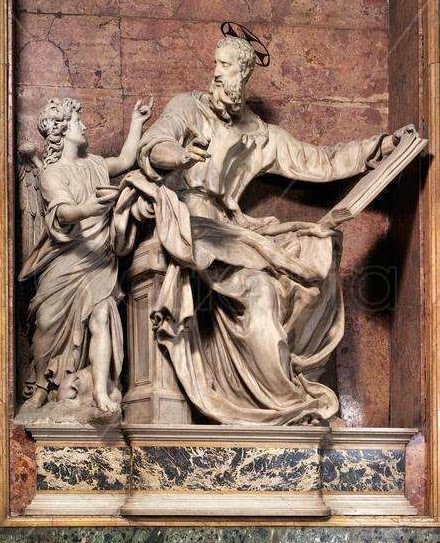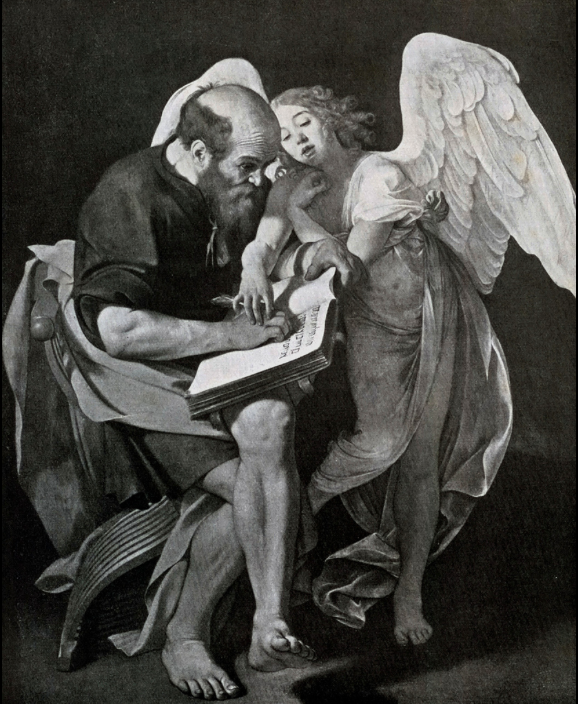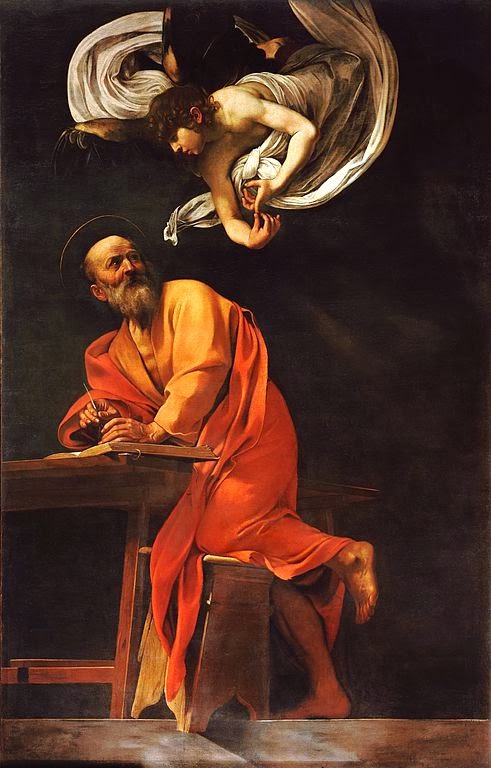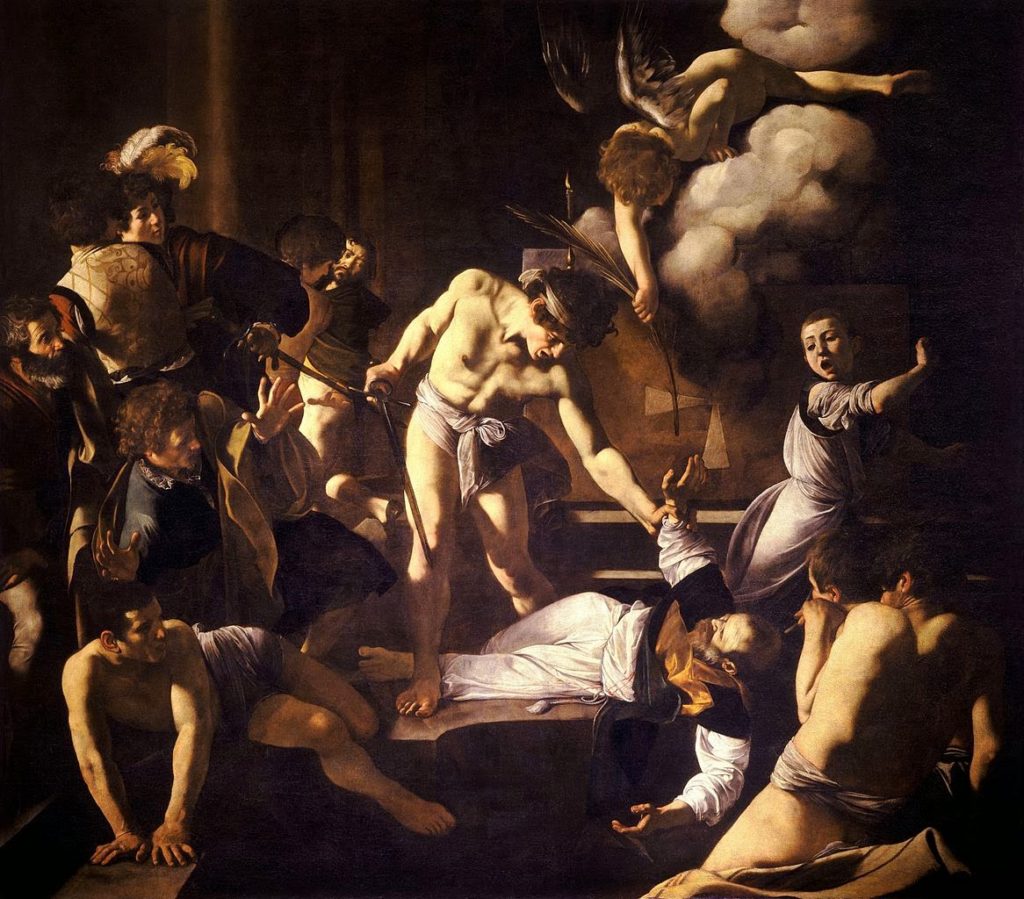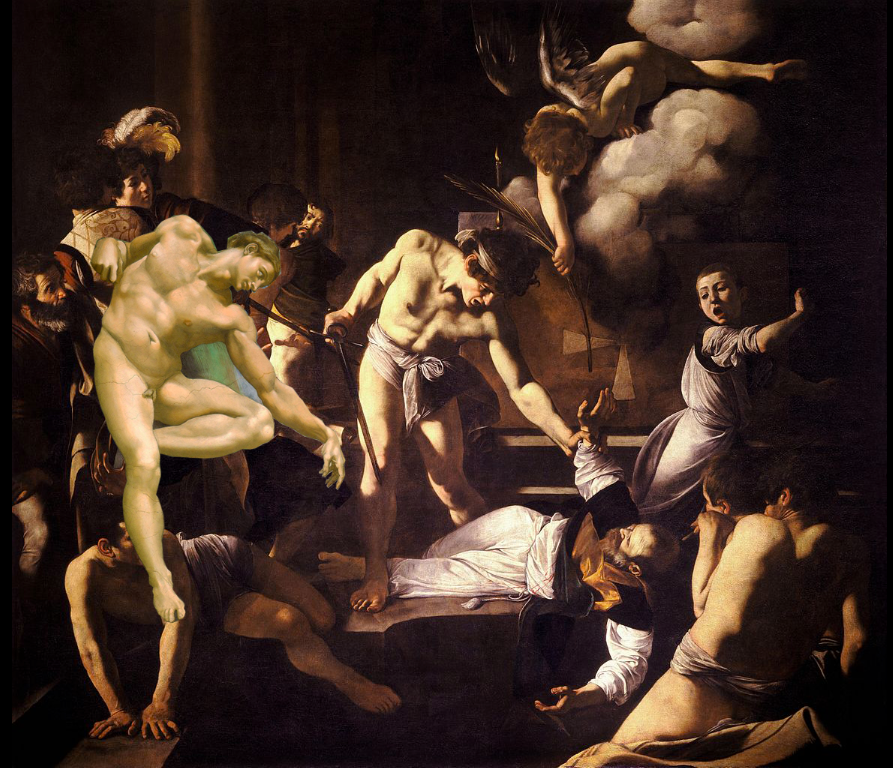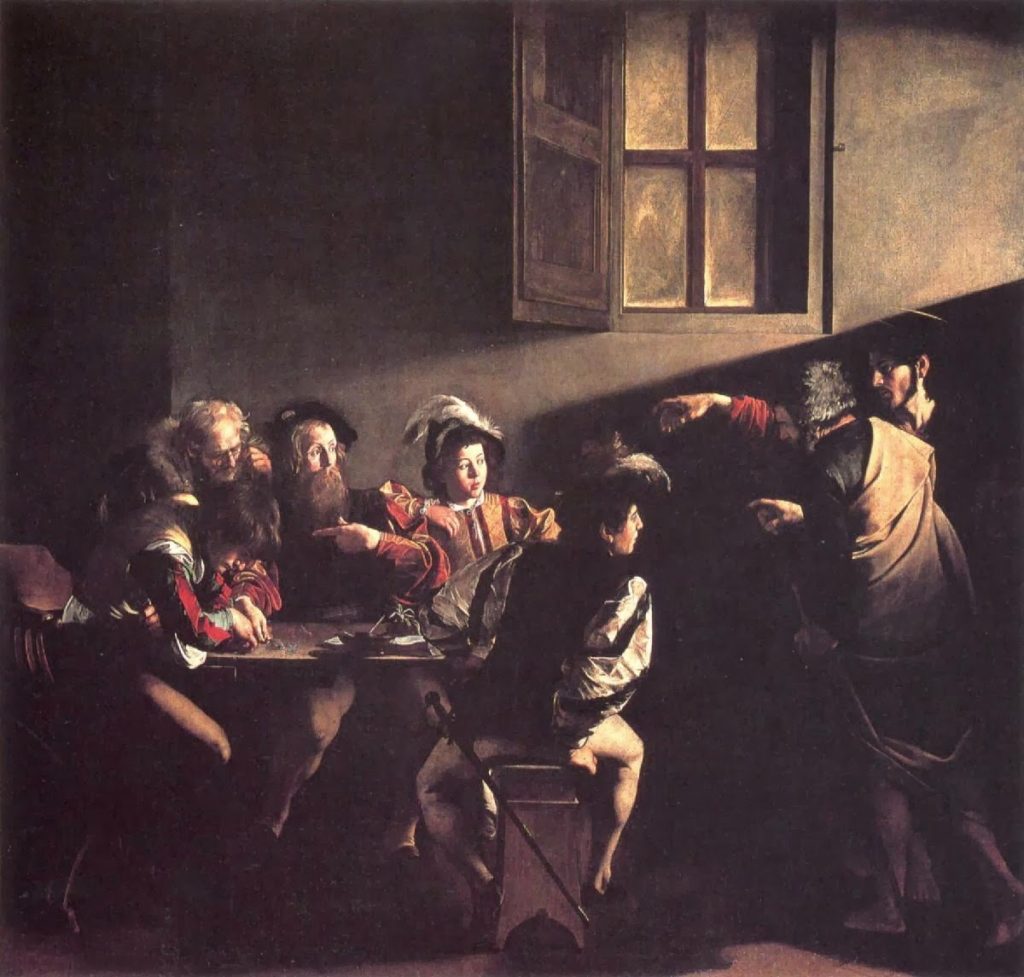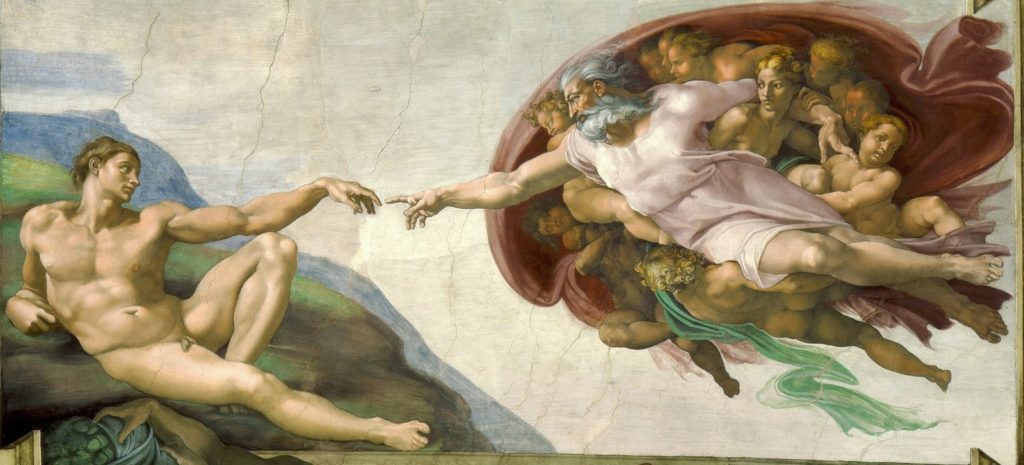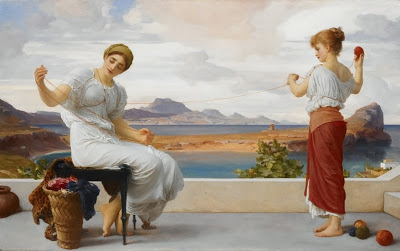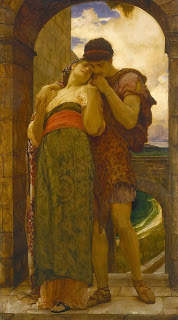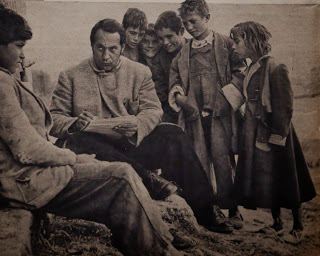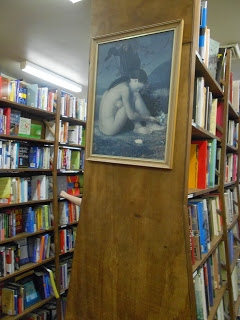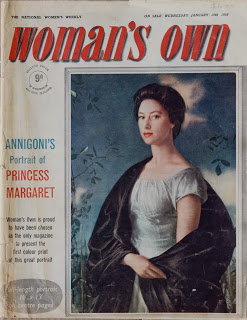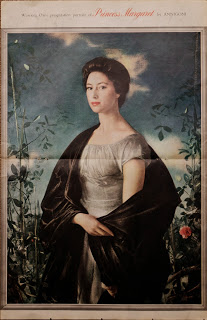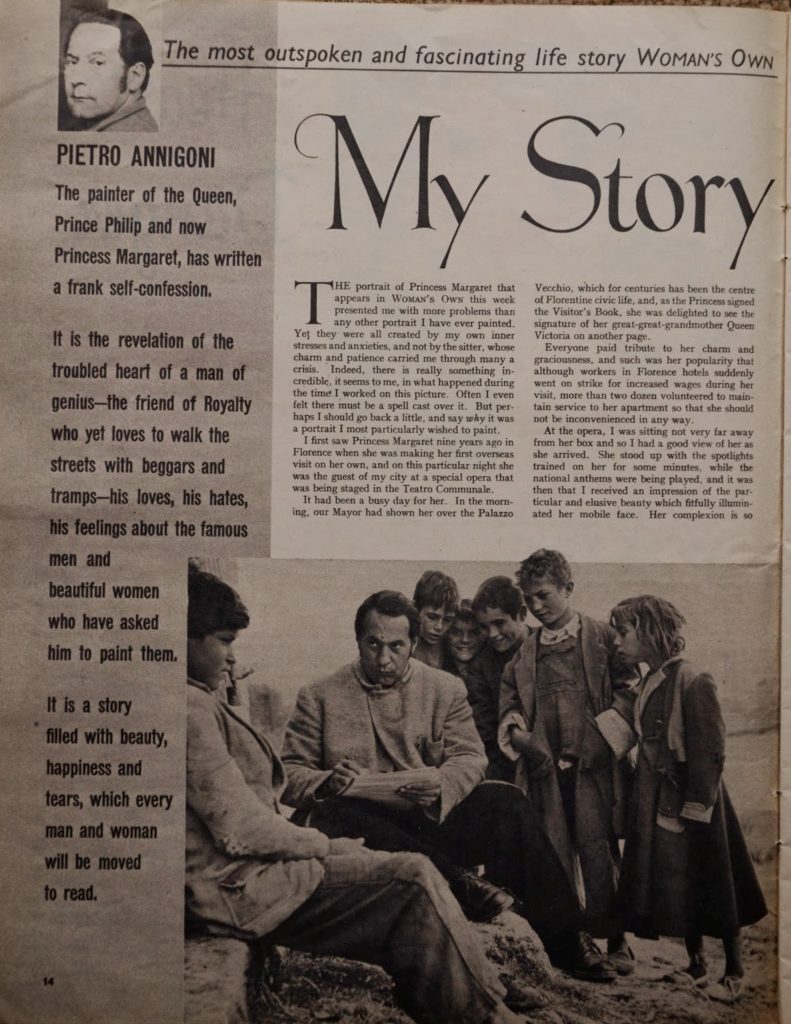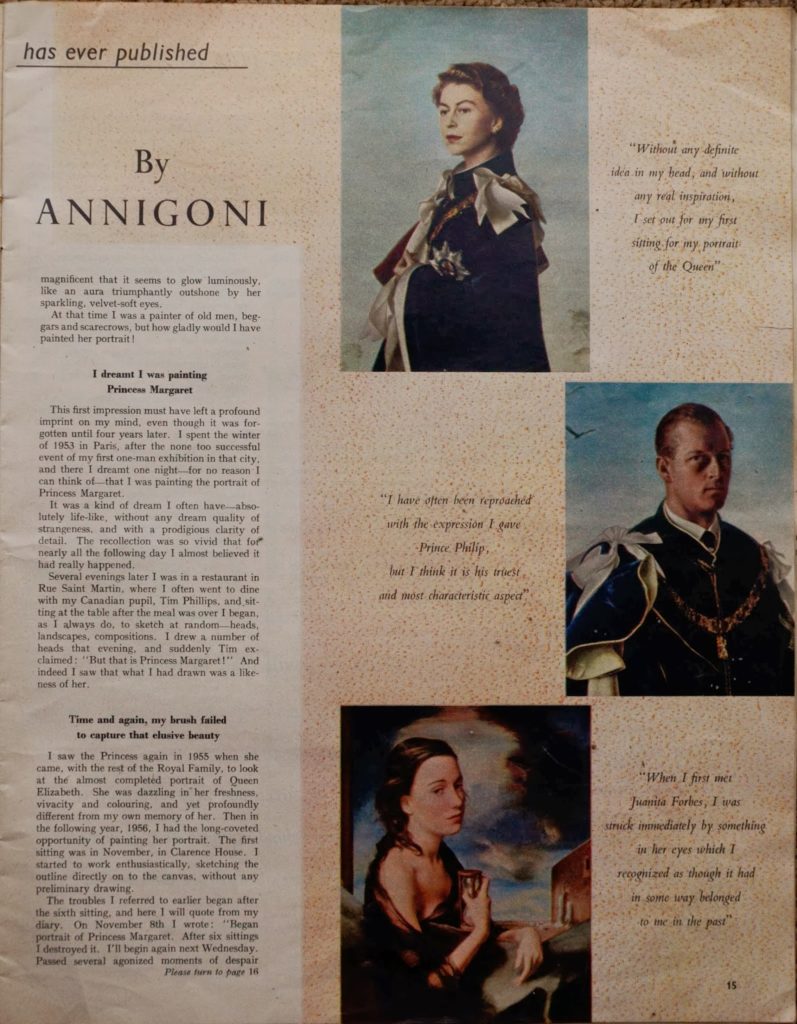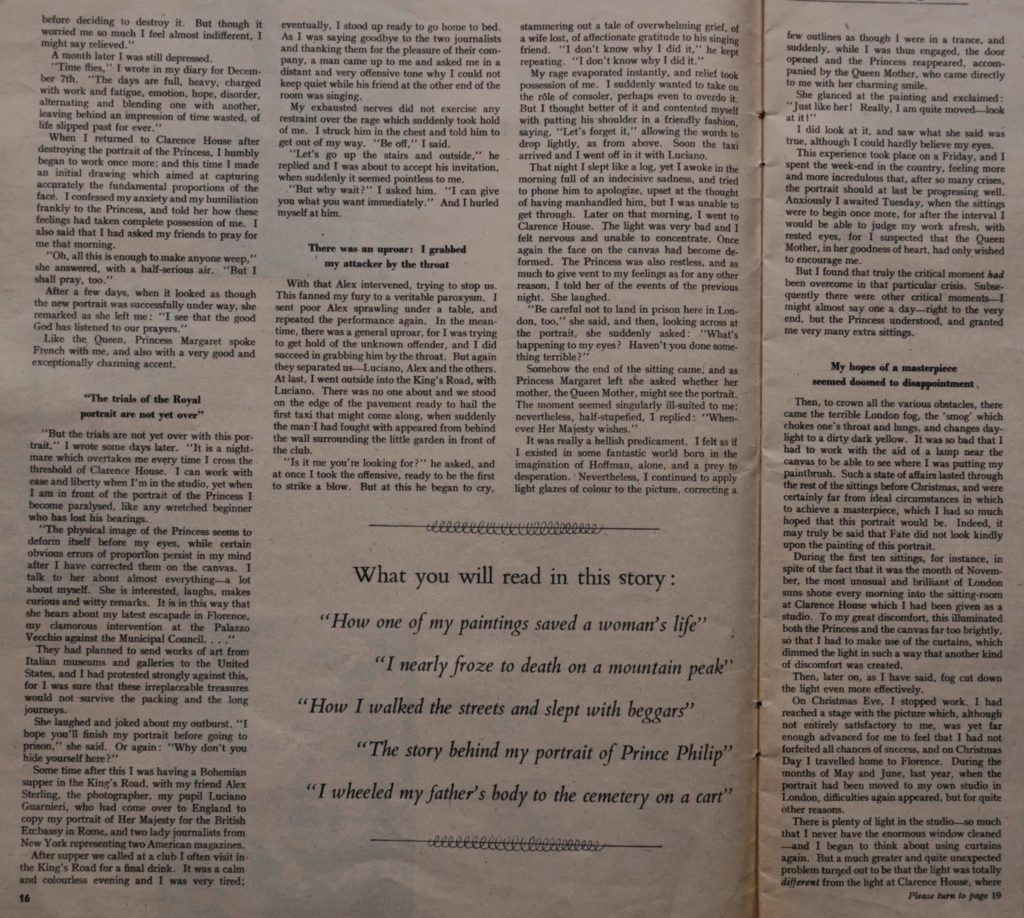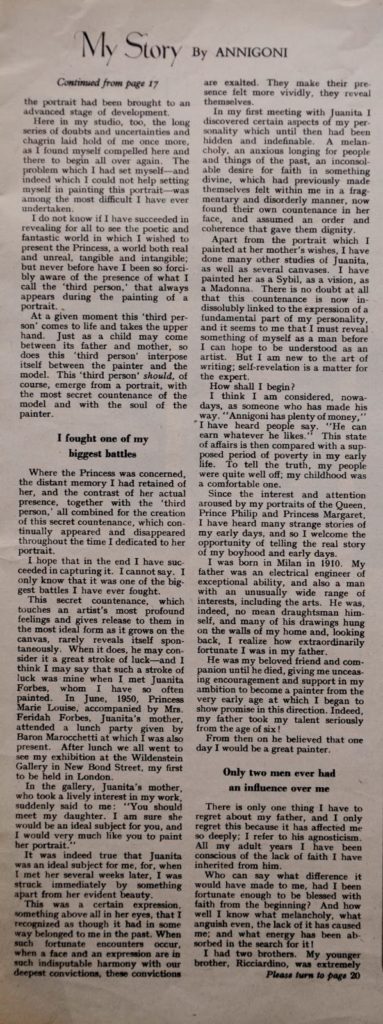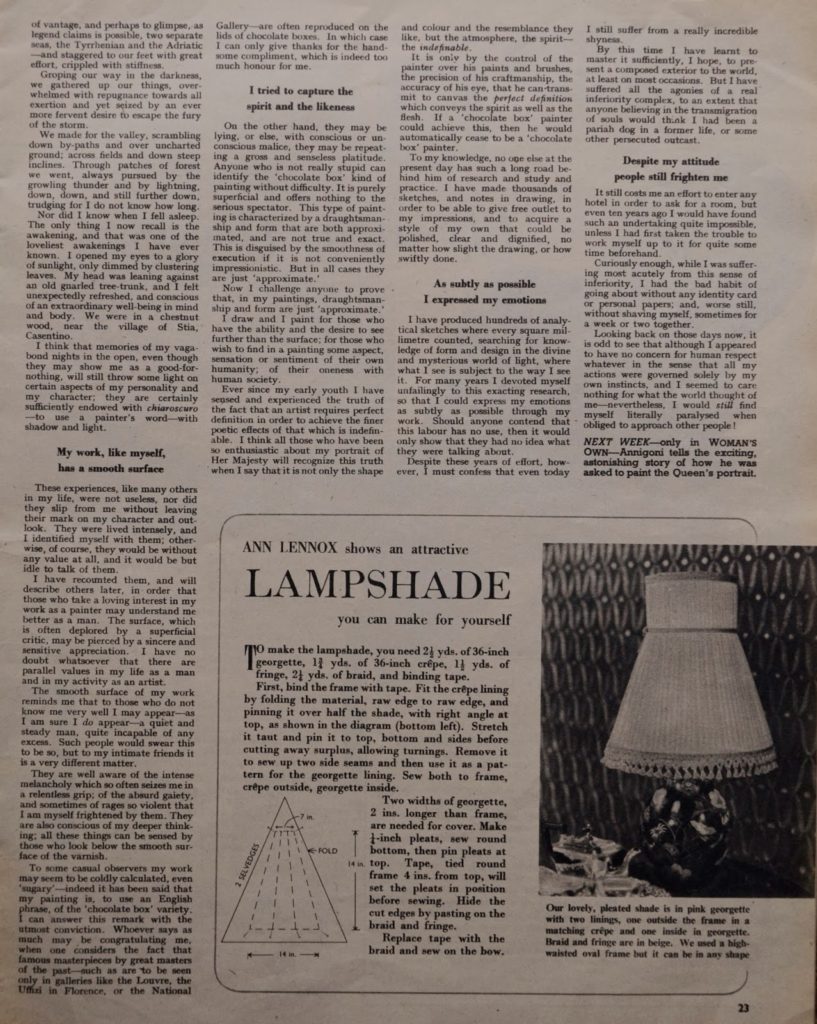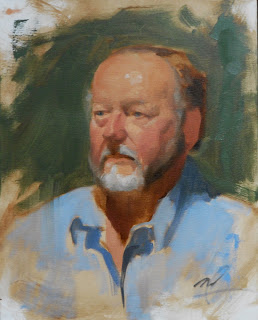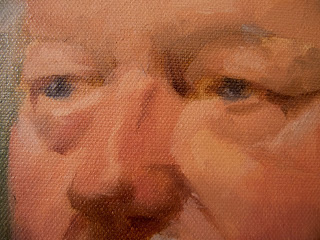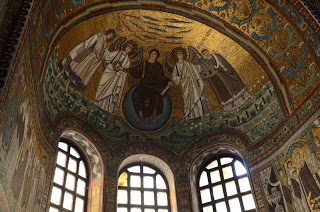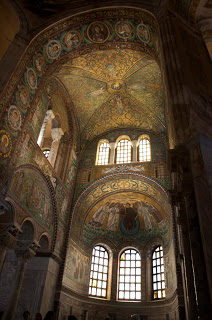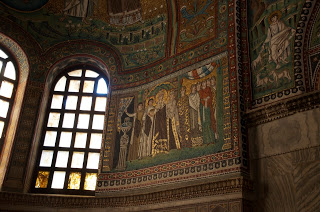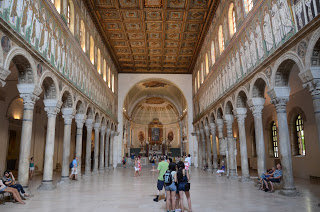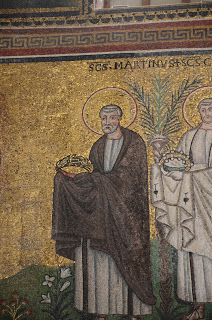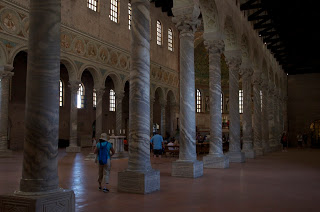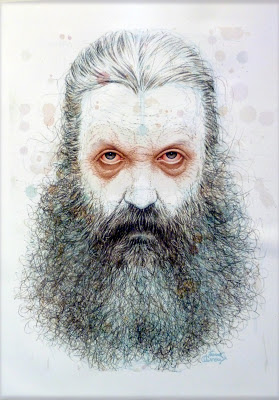The Two Michelangelos: Postscript – Another Contarelli Chapel Commission
Caravaggio was contracted for two side paintings in the Contarelli chapel, those we have looked at in the last three posts. The project was finished and installed in 8 months. For the front wall of the chapel, the Flemish sculptor Jacob Cobaert was commissioned to complete a “St. Matthew and the Angel” which was rejected for unknown reasons a short while after being installed. The sculpture ended up in Santissima Trinita dei Pellegrini in Rome.
The Two Michelangelos Part 2
Legend . Matthew was murdered while celebrating mass in the Ethiopian city of Nadaber. He had refused to marry the King Hirtacua to Ephigenia, a consecrated virgin. Upset at this, the King sent an assassin to kill the saint.
kill him. At left we see a group of young men (including Carvaggio’s self portrait at the back) dressed in contemporary
17th C clothing (as in the “Calling”). This group could be the faithful who, upon witnessing the
murder, ran to light fire to the kings palace. On the right is the altar
boy running away from the scene while just behind him is the altar. The bottom group is somewhat confusing as it seems the figures are
distorted and/or limbless. Could this refer to the cripples that St. Matthew was
known for healing? The strange space they are in may be a reference to the Pool of Bethedusa – a healing
pool in Jerusalem mentioned in St. John’s Gospel.
It is the grouping of St Matthew and the assassin that is most interesting. Once again Caravaggio references Michelangelo’s Creation of Adam, using the body of
Adam in the place of the assassin. Below I have photoshopped Adam next to the assassin to demonstrate the similarity:
sinner and been exiled from Paradise. The assassin/Adam grabs the hand of Matthew,
trying to block contact with the palm of martyrdom being offered to him by the
angel above. Adam here is an image of arrogance in contrast to the redemptive power offered to Matthew. It is sin that prevents us from receiving the grace of God. In this grouping Caravaggio represents the complex rapport between human and divine.
With “The Calling of St. Matthew”, the hand of Adam became the
hand of Christ that calls Matthew. In “The Martyrdom”, the body of Adam just created becomes the arrogant body of the assassin of St. Matthew. The angel above Matthew is one of the angles from the flight of the angels within God the
Divine Creator.
In the next post we will see how Caravaggio continues to reference the Sistine Chapel in his painting of “Supper at Emmaus”
The Two Michelangelos Part 1
Buonarotti and Michelangelo Merisi da Caravaggio that is.
any master, understood art history and was able to play with the language
of art to make complex theological statements. A continual source for him was
Michelangelo and we find Caravaggio quoting the great master in many of his
paintings.
Chapel (1599 – 1600) in San Luigi Francesi in Rome, Caravaggio was granted his
first major commission. On
his death in 1585 the French cardinal, Matthieu Cointerel (Contarelli in
Italian) had left a large sum of money and instructions for a chapel to be
dedicated to his patron saint, St. Matthew. Caravaggio completed the commissions on canvas, something unheard of for large murals at that
time which were usually executed in fresco. Three large painting were finished in 8 months.
C wear. This emphasizes that Christ’s call is eternal, for all people
of all ages.
will look at the complex and interesting theology presented by
Caravaggio in a second painting in the chapel, “The Martyrdom of St. Matthew”.
Blood Pudding
Ladies and Gents, Blood Pudding.
Lords in Sydney
“My Story” by Annigoni ( or how I found Annigoni Down Under)
While in Australia I had a couple of run-ins with Pietro Annigoni. Annigoni, for those who do not know, was the Italian oil and fresco painter who became famous after painting Queen Elizabeth II’s portrait in 1956. John Angel, my maestro in Florence was a student of Annigoni’s, so Annigoni is sort of my artistic grandfather.
While browsing the stacks at an used book store in Sydney I came across this:
`
Demo Down Under
The following progress shots were taken at various points over 2.5 hours:
Off the Coast Podcast
Early in July I recorded some audio
with an old pal from Florence, Matt Collins. Matt is an amazing artist and one of the head instructors at Cecil Studios in Florence. Take a look at his site here:
Matt Collins website.
I decided to play around a little to try and get an idea of how hard it would be and how much time it would take to do a podcast. It took the whole day (not including the conversation) and was not that difficult. There is plenty of free online help: Top 5 pieces of free podcasting software.
The podcast is far from professional, nor complete, but the process has been fun. To listen now, click on the audio player on the top right.
You can also download the mp3 here: Off the Coast Podcast 13/08/13 – Matt Collins
The music I used was was free, from Opsound.org. Intro piece: Inhale Part 2 by Peter Rudenko
Closing piece: Lost On Corners by The Orchestral Movement of 1932
Ravenna
San Vitale – 526 AD – one of the most important examples of early Christian Byzantine art and architecture in western Europe.
Mosaic of the greatest saint ever: Saint Martino!
described as “an outstanding example of the early Christian basilica
in its purity and simplicity of its design and use of space and in the
sumptuous nature of its decoration”. The basilica is a 15 minute bus ride
from Ravenna and is situated in what used to be Classe, the main port on the
Adriatic founded by Augustus Cesar around 20 BC. Today the basilica is found
isolated surrounded by fields of sunflowers. a stunning contrast of nature and
architecture.
Taking a Leap
tremendous risk. It was a fool’s leap, a shot in the dark. But anything of any
value in our lives, whether that be a career, work of art, a relationship, will
always start with such a leap. And in order to be able to make it you have to
put aside the fear of failing and the desire of succeeding. You have to do
these things completely purely, without fear, without desire. Because things
that we do without lust or result are the purest actions we shall ever take” – Alan Moore


